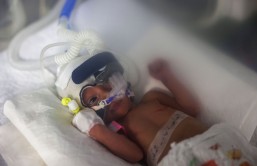During its wheeled treks on the Red Planet, NASA's Spirit rover may have encountered a potential signature of past life on Mars, according to the scientists at Arizona State University (ASU).
To help make their case, the researchers have contrasted Spirit's study of "Home Plate"- a plateau of layered rocks that the robot explored during the early part of its third year on Mars.
The work has to the emergence of Provoactive paper- "Silica deposits on Mars with features resembling hot spring bio-signatures at El Tatio in Chile."
As reported by Nature communications, field work in Chile by the ASU team shows that nodular and digitate SIlica structures at El Tatio that most closely resemble those on Mars include complex sedimentary structures produced by combination of biotic and abiotic processes.
"Although fully abiotic processes are not ruled out for the Martian silica structures, they satisfy an a priori definition of potential bio-signatures," the researchers wrote in the study.
Spirit landed on Mars in January 2004, a few weeks before its twin, Opportunity, touched down in a different part of the Red Planet. Both golf-cart-size rovers were tasked with looking for signs of past water activity during their missions, which were originally planned to last three months.
Spirit encountered outcrops and regolith composed of opaline silica (amorphous SiO2nH2O) in an ancient volcanic hydro-thermal setting in Gusev crater.
The physical environment of El Tatio offers a rare combination of high elevation, low precipitation rate, high mean annual evaporation rate, common diurnal freeze-thaw and extremely high ultraviolet irradiance.
Spirit bogged down on Mars in May 2009, becoming stuck in soft soil.
In late January 2010, after months of attempts to free the rover, NASA dubbed the wheeled robot a stationary research platform. The lack of mobility and the harsh climes of Mars conspired to seal Spirit's fate, with attempts to regain contact with the robot ending in May 2011. Subsequently, NASA announced the end of contact efforts and the completion of Spirit's mission. (Opportunity is still going strong today.)
The ASU researchers suggested that a future and specially instrumented rover mission could perhaps provide a more definitive assessment of possible biogenicity of Home Plate silica structures.








